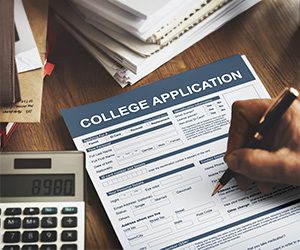Navigating the Better FAFSA
In December 2020, Congress passed the bipartisan FAFSA Simplification Act that mandated a new, simpler Free Application for Federal Student Aid (FAFSA), which overhauled the federal financial aid formula.

In December 2020, Congress passed the bipartisan FAFSA Simplification Act that mandated a new, simpler Free Application for Federal Student Aid (FAFSA), which overhauled the federal financial aid formula. These FAFSA updates are expected to help an additional 610,000 students qualify for a federal Pell Grant, and another 1.5 million students qualify for the maximum Pell award. For tens of thousands of students, attending college is deterred by the cost and financial strains. The opportunity for more students and families of color or from low-income backgrounds to have access to a simpler, improved FAFSA broadens the hopes of realizing the American dream.
After a tumultuous start in the 2024-25 cycle, the Department of Education (ED) ran a beta testing process to ensure a smooth launch of the 2025-26 FAFSA form. On November 21st, the newest FAFSA form was rolled out to the public, with students able to complete and submit their FAFSA forms with a quick processing timeline. Students and families are encouraged to complete the FAFSA now, with guidance below for special populations.
The FAFSA is an application run by the federal government that determines how much financial aid students can receive to finance their higher education.
To be eligible for federal aid through the FAFSA, students must be a U.S. citizen, U.S. national, or an eligible non-citizen.
Completing the FAFSA not only determines students’ access to federal financial aid, but also state and institutional aid. Through the FAFSA, students may be eligible for grants and scholarships (which do not need to be repaid), work-study programs, and federal loans (which often have lower interest rates than private loans).
Estimate how much federal aid you might receive
Completing the form takes less than an hour. Many students and families are able to complete the form in 20 minutes!
Some documents you might need:
If you need help determining which parent’s information you will need to provide, use this tool
Who counts as a parent on the FAFSA form?
Ready to complete? Access the form
FAFSA® Application | Federal Student Aid
Very few students encounter technical errors on the FAFSA form now. If you believe you are encountering an error on your form, check out the Known FAFSA Issues Alerts page to see if there are any workarounds in place.
You can also receive support through the Federal Student Aid Information Center by calling 1-800-433-3243 (1-800-4 FED AID). ED has increased the number of staff members at the call center by 80% to ensure that you get the help you need!
Federal Student Aid’s Financial Aid Toolkit: 2025–26 FAFSA Form Now Available
Federal Student Aid’s Financial Aid Toolkit
Curious how your high school, school district, or state is doing in terms of FAFSA completion? Check out NCAN’s FAFSA Tracker
If your required parent(s) does not have an SSN, you will complete the FAFSA as normal, but your contributor without an SSN will have to manually input their financial information from their tax forms instead of using the IRS Data Retrieval Tool.
Parental legal status does not affect eligible students’ right to federal financial aid. Have concerns on how your data is used?
Department of Education FAQ on FAFSA Data
SoCalCAN Communications Principles for Supporting Undocumented Students and Mixed-Status Families
If you are currently incarcerated, or supporting a student who is currently incarcerated, know that federal financial aid is available for prison education programs (PEPs).
Prison Journalism Project’s FAFSA How-To Guide
Department of Education’s Confined or Incarcerated Student Fact Sheet
SchoolHouse Connection Resources
FAFSA and Youth Homelessness + Comprehensive FAFSA-Related Resources